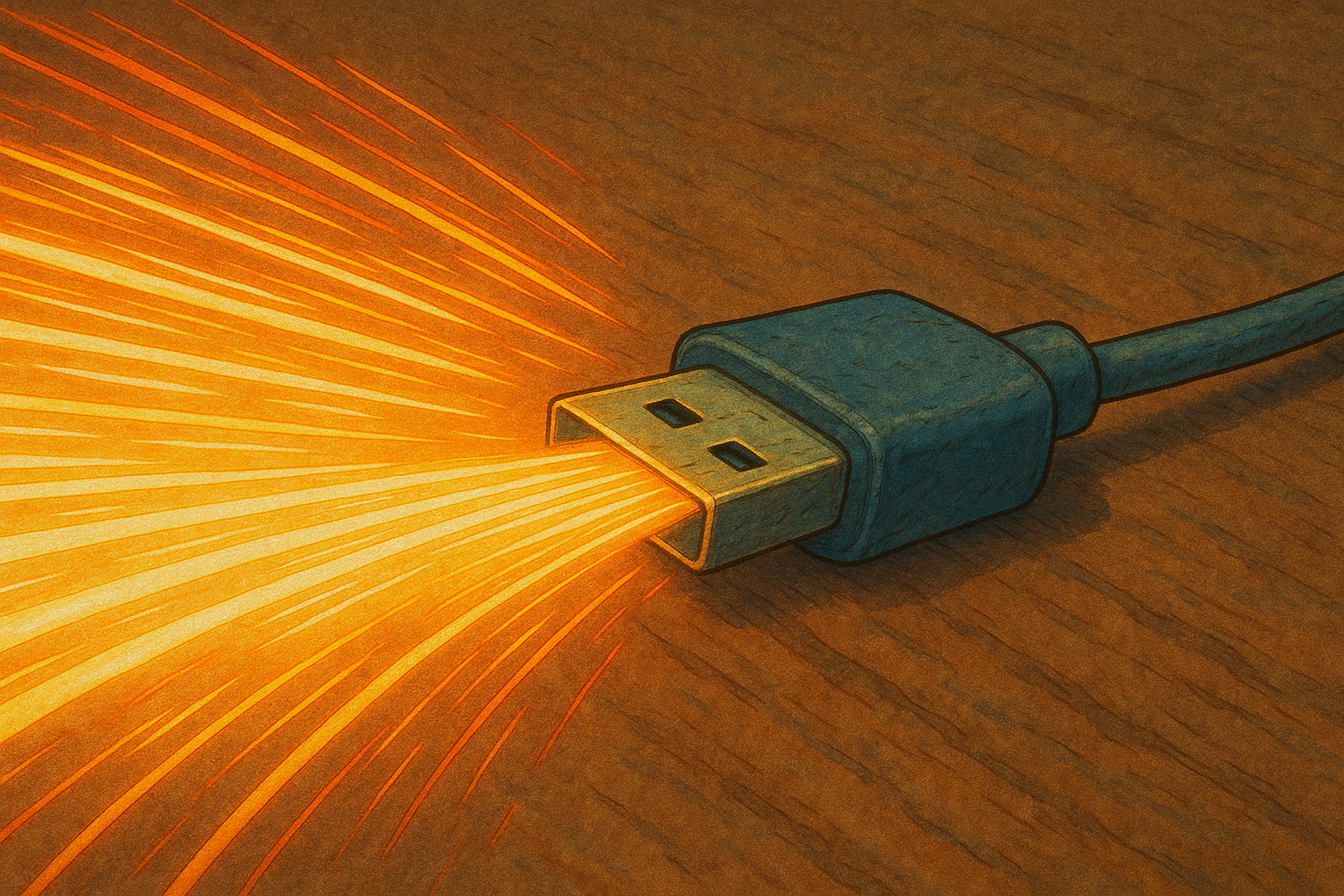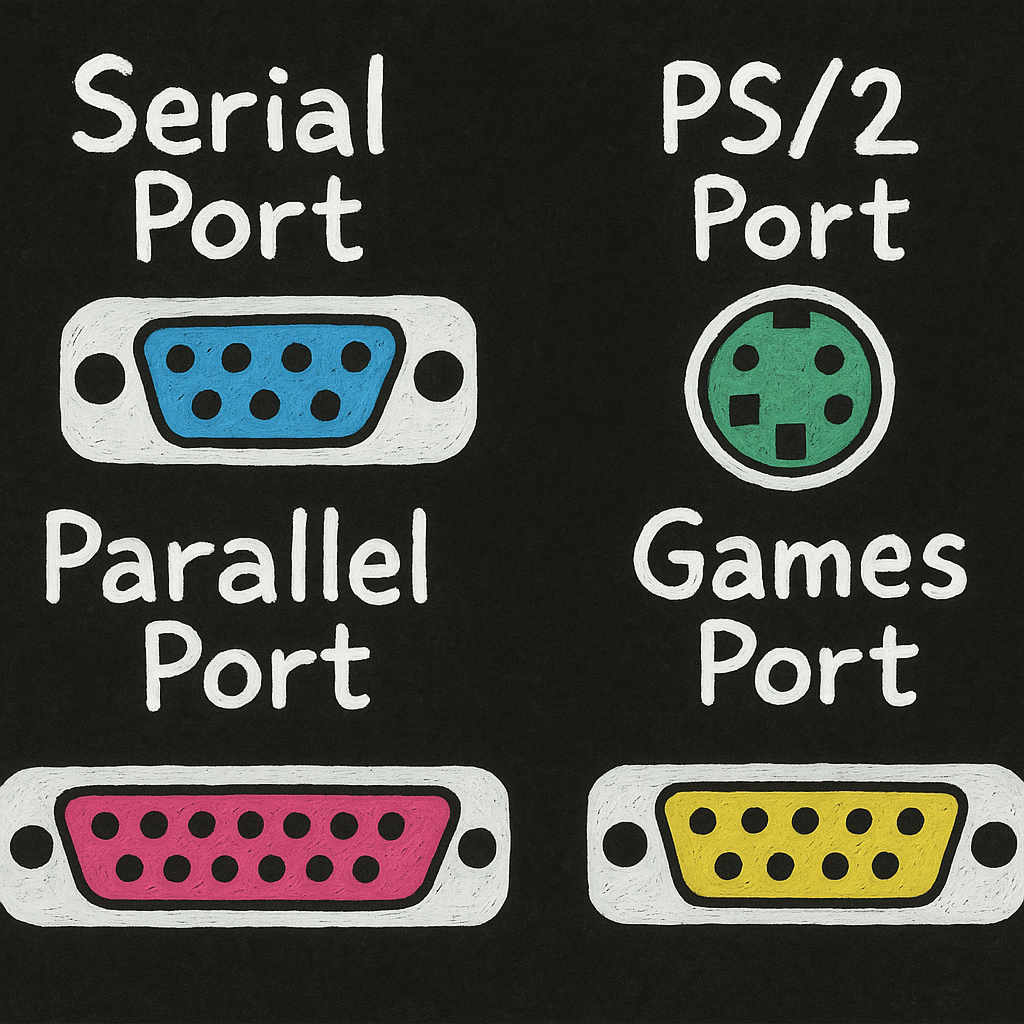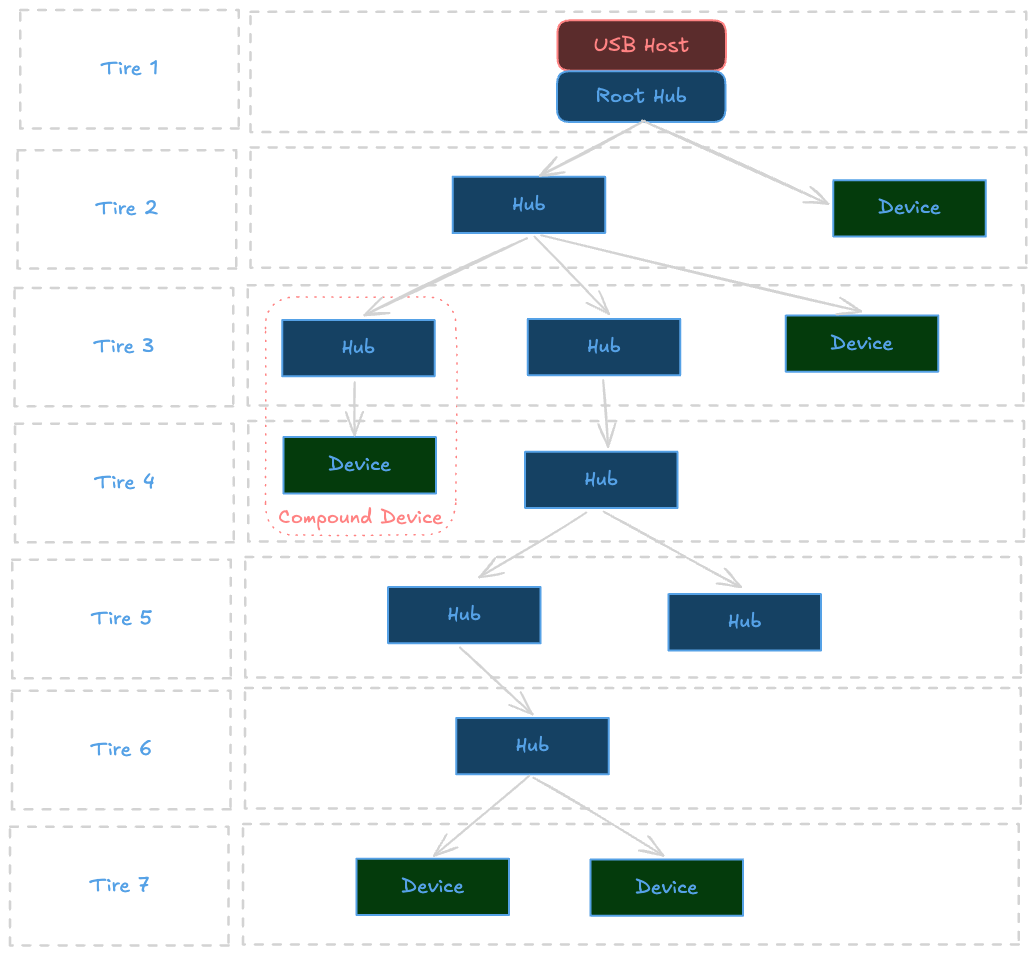
USB is easy to use, but not so easy for developers 🧑💻.
The USB 2.0 standard is challenging because, unlike other standards, it is not a small document. The basic USB 2.0 specification spans approximately 650 pages USB 2.0 Specification.
Don’t worry; we’ll dive deep into the USB protocol and uncover the challenges of building end products using USB. After all, you can’t say it’s hard until you try it yourself and get your hands dirty. 🛠️
Why Was USB Created? 📜
A Brief History 📖

Note: The image is for port representation only; pin details are not accurate. 🤫
USB movements in the mid-1990s by companies like Intel, Microsoft, compaq, and IBM aimed to simplify peripheral connections to personal computers. Before USB, connecting devices required various bulky and confusing ports (serial, parallel, PS2(Mouse, Keyboard), Sound), Fixed IO address which was not scalable and often required system reboots.
The team led by Ajay Bhatt from Intel was the mind behind USB.
The first version, USB 1.0, was officially released in 1996, aiming to create a universal, user-friendly interface with plug-and-play functionality.
And soon after 2 years USB 1.1 come up to fix timming and power related limitations on USB 1.0.
If you like to deep dive in to history check out this below vides it’s explain really well.
What is USB? 🔌
Universal Serial Bus (USB) is an industry standard that is used almost every day by nearly everyone. USB isn’t just for flash drives—it powers your phone for charging 🔌 and data transfer 📲, industrial cameras 📷, car audio systems 🎧, and even medical devices. 🩺
Key Features ✨
| Feature | Description |
|---|---|
| Universal Interface | One connector type for numerous devices. |
| Plug and Play | Automatic detection and configuration of devices upon connection. |
| Protocol flexibility | Allows devices to be designed for both high bandwidth and low latency simultaneously for bidirectional communication. |
| Power Delivery | Supplies power to devices, removing the need for extra adapters. |
| Robustness | Supports builtin error handling and recovery. |
| Scalability | Allows connection of multiple devices through hubs. |
| Backward Compatibility | Ensures newer standards work with older ones, albeit with speed limitations of the slowest connection. |
How USB Works 🏗️
USB Architecture
USB used tiered-star topology, so as it’s says it’s tiered means communication device in multipul tier, Host & root Hub is Tire 1, and by adding more device or Hub in chain add Tire Number.
Star means Root Hub can allow multpul device or Hub to connact, and same every HUb allow to create new start network.

| Component | Description |
|---|---|
| USB Host | Manages the USB bus and communicates with connected devices. |
| USB Devices | Peripherals like keyboards, printers, and storage devices. |
| USB Hubs | Expand the number of USB ports available. |
USB Generations: From USB 1.0 to USB4 🏎️
USB 1.x 🕰️
-
USB 1.0/1.1: Low-Speed (1.5 Mbps) and Full-Speed (12 Mbps)
-
The initial release provided a data rate of 12 Mbps for high-bandwidth devices and 1.5 Mbps for peripherals like keyboards and mice.
-
USB 1.1 resolved issues and saw wider adoption.
-
Limitations: Too slow for large file transfers.
-
USB 2.0 🚤
-
High-Speed (480 Mbps)
-
Released in 2000, this significantly boosted data transfer speeds.
-
Backward Compatibility: Compatible with USB 1.x devices.
-
Became the dominant standard for years.
-
USB 3.x 🚀
-
SuperSpeed Variants:
-
USB 3.0: 5 Gbps
-
USB 3.1: 10 Gbps
-
USB 3.2: 20 Gbps (Dual-Lane)
-
Introduced faster data rates and new connector types.
-
USB4 ⚡
-
40 Gbps and Thunderbolt 3 Compatibility
-
Released in 2019, offering dynamic bandwidth sharing for DisplayPort and PCIe tunneling.
-
Uses USB Type-C connectors exclusively.
-
With its evolution and versatility, USB remains a critical standard in modern technology. 🌟 Whether it’s charging a phone 🔋 or powering industrial equipment 🏭, USB continues to connect the world seamlessly. 🌐
Next, we’ll deep dive into USB 2.0.